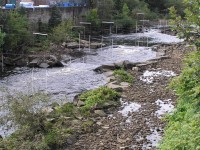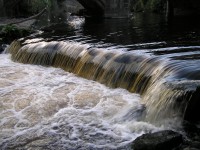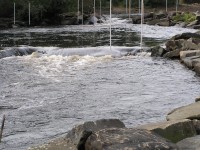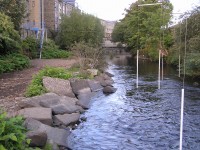Disclaimer: Canoeing and Kayaking are ‘assumed risk’ – ‘water contact sports’ that may carry attendant risks. Participants should be aware of and understand these risks, and be responsible for their own actions and involvement. Whilst every care is taken to ensure your safety during club activities, Halifax Canoe Club is not responsible for your safety or for loss or damage to property or equipment belonging to any individual resulting from this information.
Access arrangement for the White Water Course and Clubhouse Area
The club has to co-exist with other residents in the mill complex. Please adhere to the following points to minimise disruption to residents and help us to maintain a positive relationship with residents.
The club has only two allocated parking spaces (in front of the clubhouse) which are used during coached sessions for getting boats in and out. When these spaces are full or during coaching sessions please park away from the mill complex (you can drop boats etc off, but please take your car to one of the car parks nearby). Do not park in or block resident’s spaces.
Avoid leaving boats and equipment where they obstruct access to people’s flats – particularly upstairs outside club, outside the flat by the changing rooms (including leaning paddles up against the windows and walls), and in the yard between the wooden gate and the access bridge.
White Water Course
General Description: The Course is made up of a weir and 4 artificial drops and pools, it provides for a good introduction to white water (grade 2), play boating or slalom practice.
Grading: Generally grade II but has drops that could be considered grade III when the water level is high.
Water Level Indicators: The course is paddlable in all but extreme high water. At low levels it can still be paddled with a slight scrape on the drops.
The water level is best gauged from the weir at the top of the course and the get off steps – see the Clubs River Conditions Policy for full advice on suitable river levels.
The most important thing is that when the water level is high you must be able to egress by the metal steps at the bottom of the course to get out. If not, at high levels there is no other get off before the next weir (approx 500m downstream) which is dangerous in high water – a wall to wall canoe-gobbler, with no possible portage or place to rescue. Also some of the lower slalom wires start to become a hazard at higher levels! However, the white water course starts to washout at these higher levels, so better paddling can be found elsewhere.
Put In: This is near to the Club, through other residents’ land for which we have access rights. The put in is through the brown gates with sign saying “No Public Right Of Way” and over the footbridge to the launch area. Please be respectful of residents when passing through this area and make sure the gate is closed behind you.
Get Out: The take out is at the bottom of course, up the metal steps into the mill complex (see the note above and check you can get off before you get on.
Major Hazards / Falls: The weir drop has a tow back which can be dangerous for the inexperienced and unwary – this is worst in low to medium levels. Debris washed down by floods can be an occasional problem. Most importantly – you must be able to beach and get out at the metal steps when levels are high (see above).
Access Situation: No problems providing you are respectful of residents on the site.
Visiting Paddlers: There is no charge for paddlers playing on the course. All we ask is that you respect the local residents and keep to the guidance above regarding parking and access. For larger groups, in order to minimise the disruption to residents we may be able to arrange for a club member to meet you and give access to changing facilities with showers. Regular paddlers to the course are encouraged to join the club and contribute to Club life.
Please report any problems on the white water course or queries to our Access & Environment Officer.
Disclaimer: Canoeing and Kayaking are ‘assumed risk’ – ‘water contact sports’ that may carry attendant risks. Participants should be aware of and understand these risks, and be responsible for their own actions and involvement. Whilst every care is taken to ensure your safety during club activities, Halifax Canoe Club is not responsible for your safety or for loss or damage to property or equipment belonging to any individual resulting from this information.




